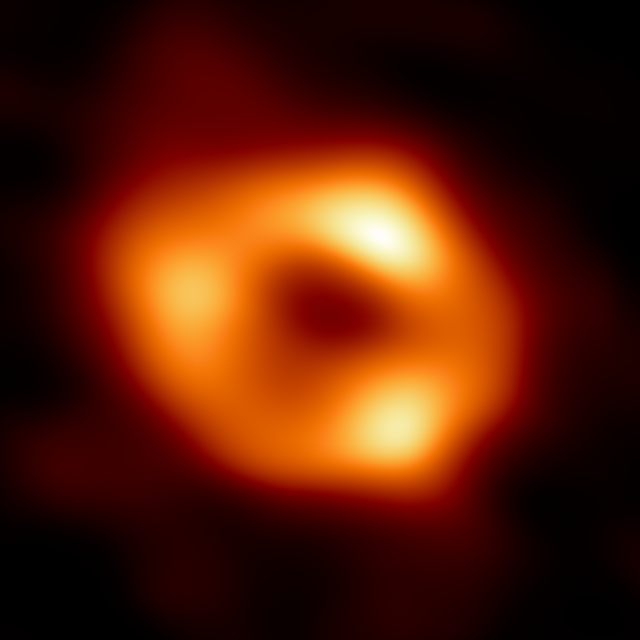The Unveiling of a Cosmic Giant
In a groundbreaking revelation, astronomers have captured the first-ever image of the supermassive black hole at the heart of our Milky Way galaxy. This monumental discovery, made by the Event Horizon Telescope (EHT) Collaboration, provides compelling evidence that this enigmatic object, Sagittarius A* (Sgr A*), is indeed a black hole. The image offers profound insights into the nature of these cosmic giants, which are believed to be at the centers of most galaxies.
Confirming the Existence of Sagittarius A*
This long-awaited image unveils the mysterious entity that has eluded astronomers for decades. Until now, the existence of Sagittarius A* was inferred from the motion of stars orbiting an unseen, massive object at the center of our galaxy. Today, for the first time, we have direct visual evidence confirming the presence of this black hole.
Peering into the Darkness
Although black holes themselves are invisible, as they do not emit light, the glowing gas surrounding Sagittarius A* provides a clear signature. The image reveals a dark central region, or “shadow,” encircled by a bright, ring-like structure. This light, bent by the intense gravitational pull of the black hole, offers a stunning glimpse of an object four million times more massive than our Sun.
The Significance of the Discovery
“We were astonished by how precisely the size of the ring matched predictions from Einstein’s Theory of General Relativity,” said Geoffrey Bower, EHT Project Scientist from the Institute of Astronomy and Astrophysics, Academia Sinica, Taipei. “These extraordinary observations have significantly advanced our understanding of the core of our galaxy and offer new perspectives on the interaction between supermassive black holes and their environments.” The findings are published in a special issue of The Astrophysical Journal Letters.
The Challenge of Imaging a Distant Giant
Given the black hole’s distance of about 27,000 light-years from Earth, its apparent size in the sky is comparable to a donut on the Moon. To capture this image, the EHT team utilized a network of eight radio observatories across the globe, effectively creating an Earth-sized virtual telescope. These observations, spanning several nights, involved collecting data for hours on end, much like a long exposure on a camera.
A Comparison with M87*
This achievement follows the EHT Collaboration’s historic release of the first image of a black hole in 2019, which depicted the black hole at the center of the distant galaxy Messier 87 (M87*). Despite the significant difference in size and mass between M87* and Sgr A*, the two black holes appear remarkably similar. “It’s fascinating to see that, despite their differences, these two black holes conform to the same fundamental principles of physics,” said Sera Markoff, Co-chair of the EHT Science Council and Professor of Theoretical Astrophysics at the University of Amsterdam.
Overcoming Unique Challenges
Imaging Sgr A* presented unique challenges due to its smaller size and rapid gas motion. The gas around Sgr A* completes an orbit in mere minutes, as opposed to days or weeks around the larger M87*. “Capturing a clear image was like trying to photograph a fast-moving puppy chasing its tail,” explained EHT scientist Chi-kwan Chan from the University of Arizona.
The Path Forward: Future Observations
To overcome these challenges, the EHT team developed advanced tools to account for the rapid gas movement. The resulting image of Sgr A* is an average of various snapshots, providing a definitive glimpse of the black hole at the center of our galaxy.
Global Collaboration and Future Prospects
The EHT Collaboration, comprising over 300 researchers from 80 institutions worldwide, spent five years analyzing data and developing sophisticated simulations to achieve this feat. Their work not only enhances our understanding of supermassive black holes but also opens new avenues for testing theories of gravity and the behavior of gas in extreme conditions.
Looking ahead, the EHT team is planning future observations with even more telescopes and advanced technology, promising more detailed images and possibly even movies of black holes.
Conclusion: A Testament to Human Ingenuity
This extraordinary discovery is a testament to human ingenuity and collaboration, offering a glimpse into one of the universe’s most mysterious phenomena. Stay tuned to Science Kingdom for the latest updates on this and other exciting developments in astronomy.










